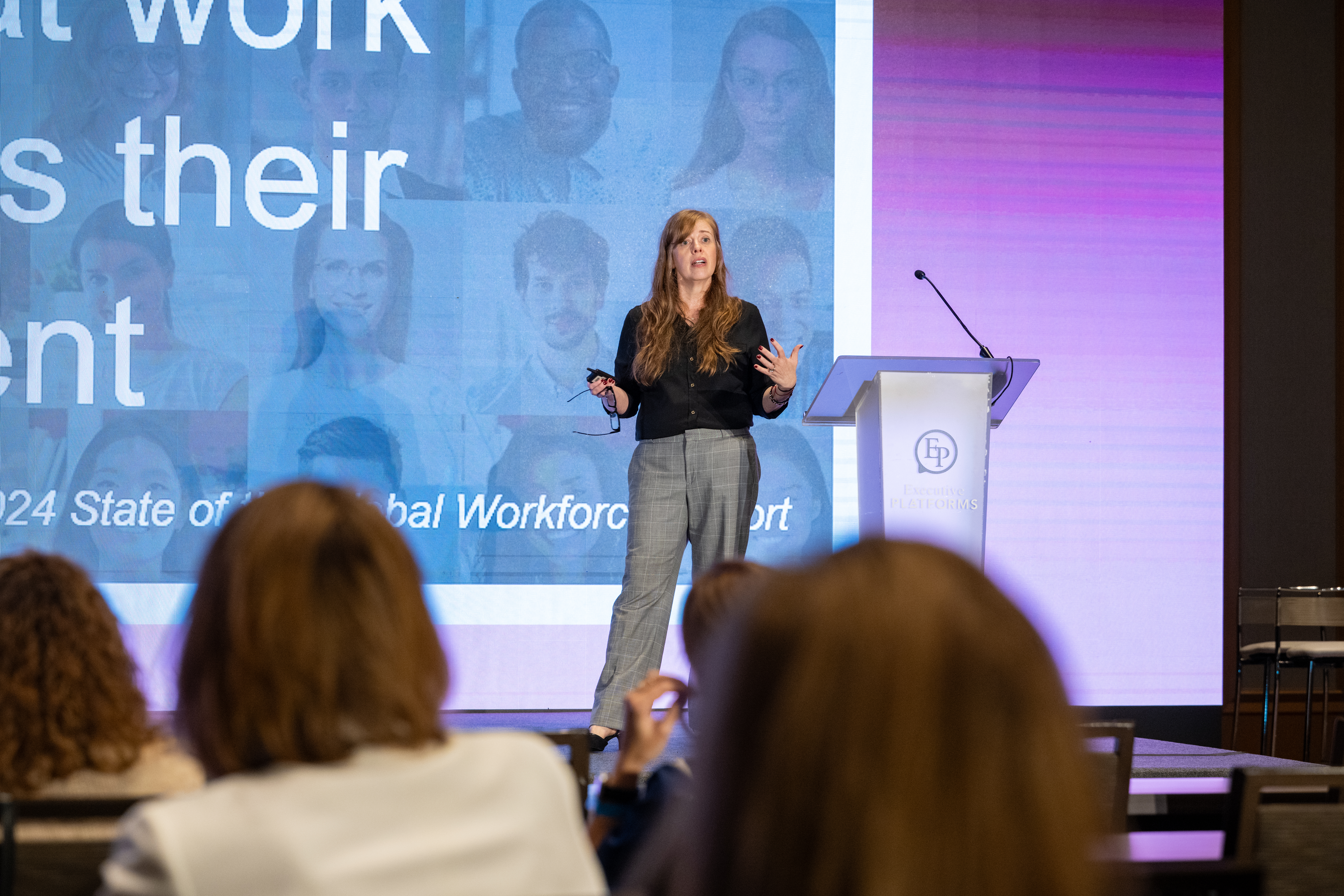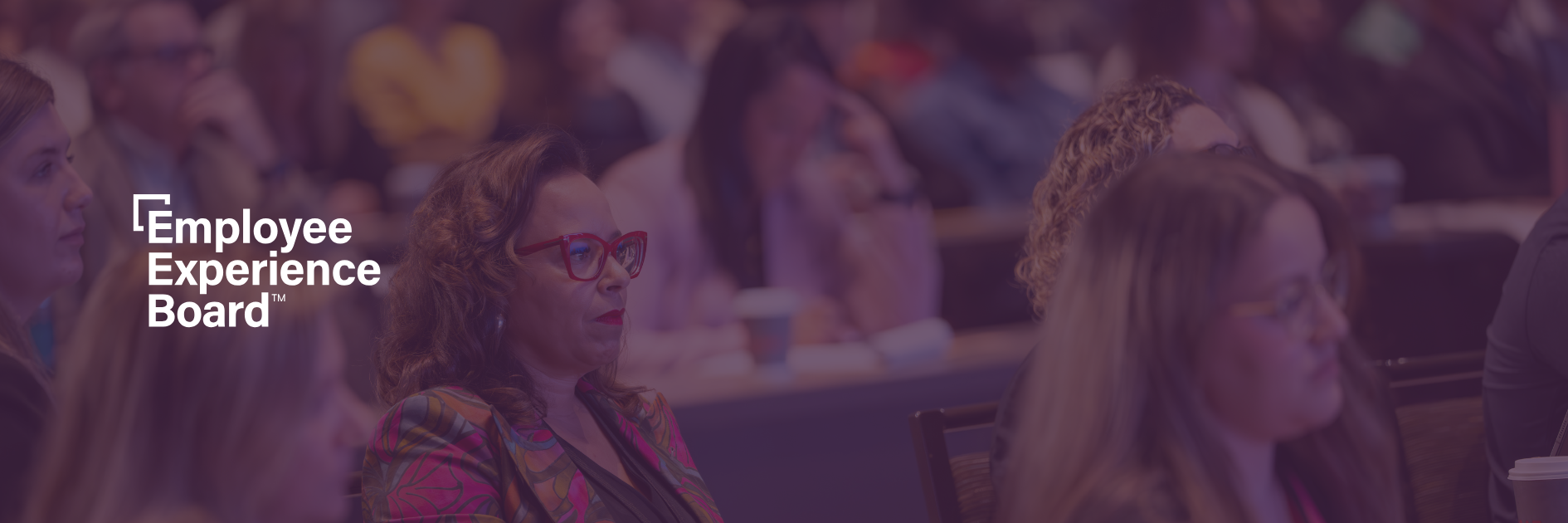Key takeaways:
- Position EX to drive strategy: Align your team with business operations and proactively build cross-functional relationships to embed EX into enterprise decision-making.
- Elevate employee voices as intelligence: Teach leaders to use employee feedback as strategic input to guide transformation initiatives more effectively.
- Balance engagement and enablement: Build cultures that empower employees emotionally and operationally, ensuring they are both motivated and equipped to succeed.
For heads of employee experience (EX), culture, and engagement, expanding influence across the enterprise is no longer a “nice to have” — it’s essential. As organizations navigate economic pressures, talent competition, and evolving employee expectations, EX leaders are uniquely positioned to drive transformation from the inside out.
But influence at the executive level isn’t granted automatically. It must be built through deliberate actions: strategic alignment with enterprise priorities, cross-functional partnership building, and delivering measurable results.
Drawing on insights from Employee Experience Board members and Liz Almeida, Chief Human Resources Officer at Panasonic North America, we’ll outline actionable strategies EX leaders are using to claim and keep their strategic seat at the table.
1. Align Your Employee Experience Reporting Structure to Business Priorities
Employee Experience Board members repeatedly emphasized how organizational structure shapes influence. Reporting to operations or directly to business leaders, rather than through HR alone, helped several EX leaders gain earlier access to strategic conversations.
One EX leader noted that sitting under the COO positioned them as a natural participant in transformation work, not an afterthought. Another shared that although rolling up to HR gave some initial credibility, it often resulted in being “lumped in” with traditional HR priorities, requiring constant advocacy to distinguish EX’s unique lens.
Similarly, Liz Almeida reminded leaders why culture must be tied to business outcomes.
“Without a strong culture, even the best paycheck is going to feel like a consolation prize,” Liz said during her keynote session at the North American HR Executive Summit.
In today’s fast-moving environment, embedding culture and experience within operational strategy is critical.

Without a strong culture, even the best paycheck is going to feel like a consolation prize.
Liz Almeida, Panasonic North America
2. Build Enterprise-Wide Relationships Proactively
Influence often begins informally through relationships, not organizational charts.
As one Board member shared, “Unless I intentionally work to build relationships across real estate, tech, and comms, most leaders don’t even know the EX function exists.”
Several others noted that partnerships with IT, facilities, and communications teams created critical “pull” moments where EX was consulted early on initiatives impacting employees.
Waiting to be invited rarely works. Successful EX leaders proactively engage key partners, positioning themselves as indispensable collaborators before issues arise.
3. Focus on “Moments That Matter”
Both Employee Experience Board members and Liz Almeida emphasized the importance of focusing EX efforts around “moments that matter”, or critical employee touchpoints that define perception.
At Panasonic, Liz shared how anchoring engagement and enablement efforts around values-based moments provided a North Star for culture work across diverse business units.
“It does require a lot of listening,” Liz said. “Most of all, though, it really does require humility.”
Our members echoed this, sharing how building “moments that matter” frameworks elevated EX beyond programs and made it essential to business transformation strategies.
4. Secure Executive Sponsorship Thoughtfully
Having an executive sponsor can significantly amplify EX influence, but finding the right one matters.
One Board member shared their strategic approach: targeting a respected field operations leader with high employee visibility rather than defaulting to an HR executive. Even when progress slowed, laying early groundwork created future advocacy opportunities.
Choosing sponsors who are highly respected by employees and connected to strategic priorities ensures EX efforts are seen as integral, not optional.
5. Position Employee Voice as Strategic Intelligence
Collecting feedback is easy; influencing strategy with it is harder.
Our members emphasized a critical lesson: employee feedback should inform leadership decisions, not dictate them. As one EX leader put it, “Employee input is a guidepost, not a blueprint.”
Liz reinforced this with a major shift at Panasonic.
“We never leaned in with curiosity and engaged employees in co-creating that action plan… so we changed that,” she shared.
Today, employees co-create action plans, enhancing ownership and driving more meaningful cultural change. Educating leaders on how to interpret and integrate employee insights, rather than reactively respond, elevates EX’s credibility enterprise-wide.

6. Make Your Impact Visible, Subtly and Consistently
Influence isn’t built through one major announcement; it’s earned through visible, consistent value.
Board members shared effective tactics:
- Featuring EX-driven insights in executive summary reports
- Promoting EX services and capabilities through intranet landing pages
- Embedding links to consultation services in email signatures
These quiet, persistent reminders ensured EX stayed top of mind for leaders without needing loud campaigns.
7. Pilot Small and Create Demand
Rather than rolling out enterprise-wide initiatives immediately, several leaders found success by starting small.
Offering “exclusive” pilots to a few business units created internal demand. As one member noted, “If others see extra attention and success happening elsewhere, they start asking, ‘How do we get that support, too?'”
Creating pockets of excellence builds momentum and positions EX as a sought-after strategic partner.
8. Balance Experiences and Engagement with Enablement
Liz highlighted a crucial insight: true enterprise transformation requires both engagement and enablement.
“Engagement is the peanut butter, that’s the stickiness… Enablement is the jelly, that’s the flavor,” she explained.
Without enablement, providing employees with the tools, skills, and support they need, organizations risk creating disillusionment even among emotionally committed employees.
Measuring both engagement (connection to purpose) and enablement (capacity to succeed) creates a fuller picture of employee experience and sharper enterprise outcomes.
9. Elevate Your Influence Through Community
Building influence isn’t a solo act. It requires strategic partners, trusted peers, and a community that shares insights and best practices.
The Employee Experience Board provides a unique, confidential space for EX, culture, and engagement leaders to collaborate, strategize, and accelerate their impact across the enterprise.
Through shared experiences, real-world strategies, and a vendor-free environment, members sharpen their ability to drive enterprise-wide change and ensure EX has a permanent seat at the table.


